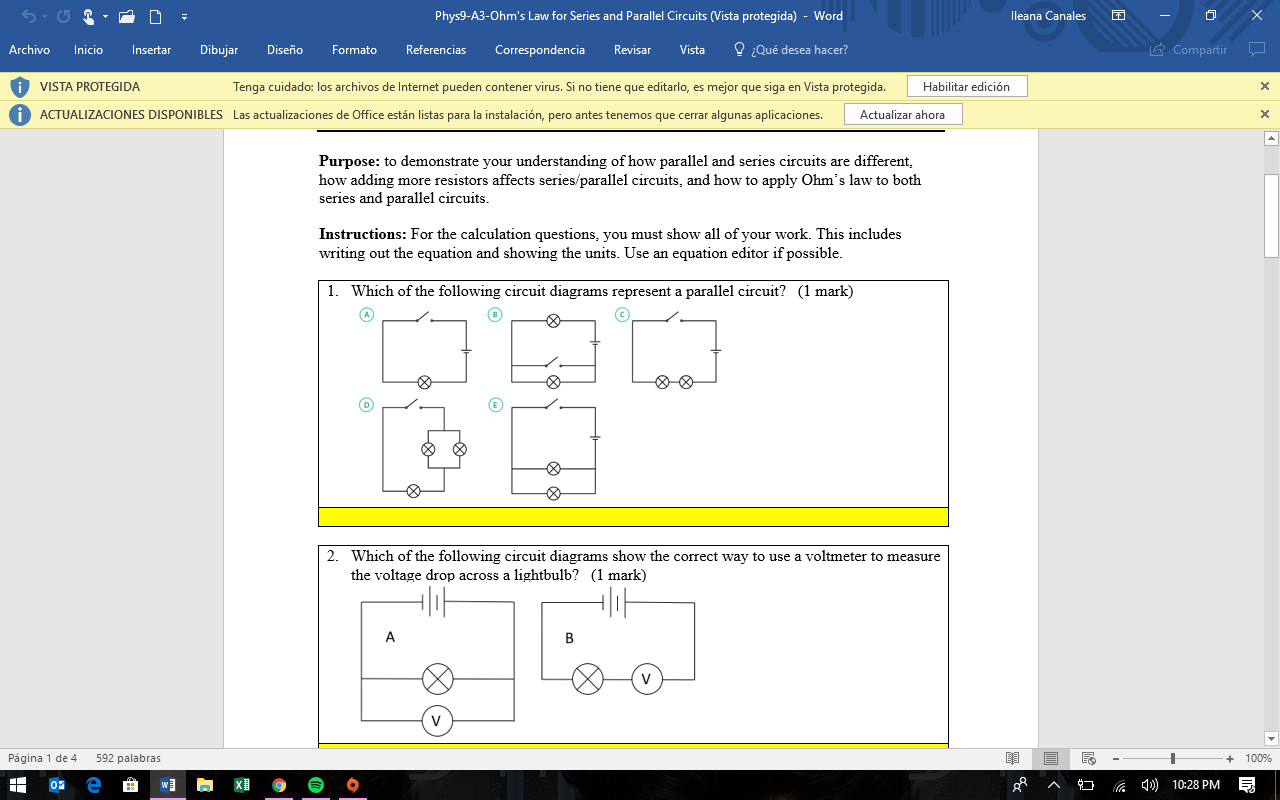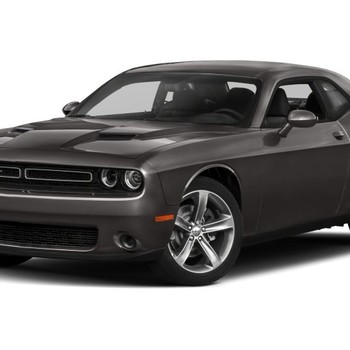Please help me figure out question 1?

1 Answer
The correct answers for number 1 are B, D, and E.
Explanation:
A parallel circuit is a circuit with more than one potential path for current to travel in. Additionally, in each path, the voltage drop must be equal and the branch currents must add to the total current.
If in a circuit the current has a choice or an intersection, then it is likely a parallel circuit
Starting with choice A, we see that there is only 1 loop that includes a battery, a light, and a switch. There is only this one path for current to travel in.
Choice B, however, does offer more than one potential path: the resistor and the switch. The voltages across each of the branches is equal and the currents of both branches adds up to the total current in the circuit.
Letter C is not a parallel circuit because the current has only one set path to follow: out the battery and through both resistors. It is a series circuit.
D is a parallel circuit embedded in a series circuit that has no source of voltage. Either way, no current would even flow in this system without a battery. Generally, the parallel classification would trump the series classification (i.e. if there was a circuit that had both series and parallel resistors, then it would be called a parallel circuit). So I will say that this is a parallel circuit, but do not forget that it is really both.
E is a straight out of the textbook parallel circuit with two resistors hooked up in parallel.

